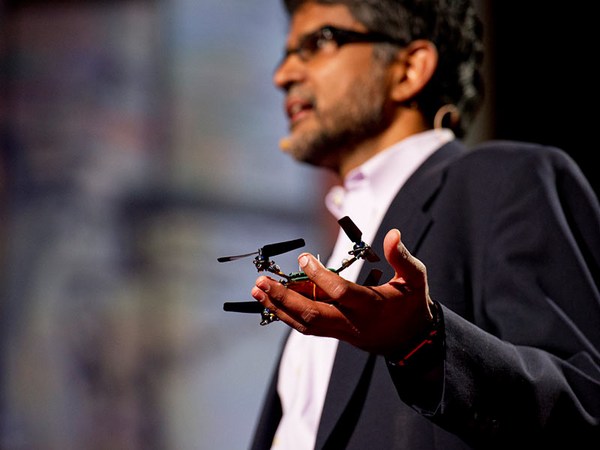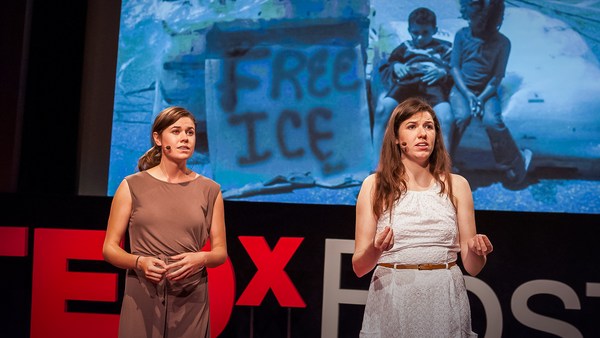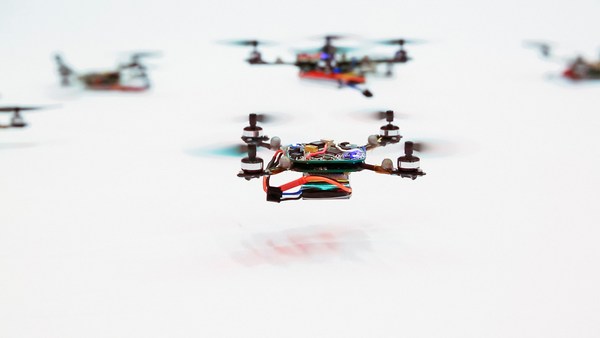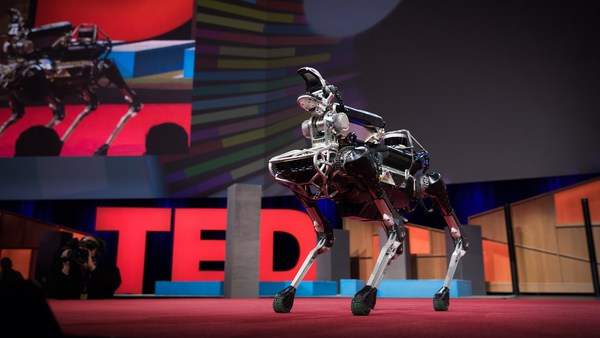Over a million people are killed each year in disasters. Two and a half million people will be permanently disabled or displaced, and the communities will take 20 to 30 years to recover and billions of economic losses.
If you can reduce the initial response by one day, you can reduce the overall recovery by a thousand days, or three years. See how that works? If the initial responders can get in, save lives, mitigate whatever flooding danger there is, that means the other groups can get in to restore the water, the roads, the electricity, which means then the construction people, the insurance agents, all of them can get in to rebuild the houses, which then means you can restore the economy, and maybe even make it better and more resilient to the next disaster. A major insurance company told me that if they can get a homeowner's claim processed one day earlier, it'll make a difference of six months in that person getting their home repaired.
And that's why I do disaster robotics -- because robots can make a disaster go away faster.
Now, you've already seen a couple of these. These are the UAVs. These are two types of UAVs: a rotorcraft, or hummingbird; a fixed-wing, a hawk. And they're used extensively since 2005 -- Hurricane Katrina. Let me show you how this hummingbird, this rotorcraft, works. Fantastic for structural engineers. Being able to see damage from angles you can't get from binoculars on the ground or from a satellite image, or anything flying at a higher angle. But it's not just structural engineers and insurance people who need this. You've got things like this fixed-wing, this hawk. Now, this hawk can be used for geospatial surveys. That's where you're pulling imagery together and getting 3D reconstruction.
We used both of these at the Oso mudslides up in Washington State, because the big problem was geospatial and hydrological understanding of the disaster -- not the search and rescue. The search and rescue teams had it under control and knew what they were doing. The bigger problem was that river and mudslide might wipe them out and flood the responders. And not only was it challenging to the responders and property damage, it's also putting at risk the future of salmon fishing along that part of Washington State. So they needed to understand what was going on. In seven hours, going from Arlington, driving from the Incident Command Post to the site, flying the UAVs, processing the data, driving back to Arlington command post -- seven hours. We gave them in seven hours data that they could take only two to three days to get any other way -- and at higher resolution. It's a game changer.
And don't just think about the UAVs. I mean, they are sexy -- but remember, 80 percent of the world's population lives by water, and that means our critical infrastructure is underwater -- the parts that we can't get to, like the bridges and things like that. And that's why we have unmanned marine vehicles, one type of which you've already met, which is SARbot, a square dolphin. It goes underwater and uses sonar. Well, why are marine vehicles so important and why are they very, very important? They get overlooked. Think about the Japanese tsunami -- 400 miles of coastland totally devastated, twice the amount of coastland devastated by Hurricane Katrina in the United States. You're talking about your bridges, your pipelines, your ports -- wiped out. And if you don't have a port, you don't have a way to get in enough relief supplies to support a population. That was a huge problem at the Haiti earthquake. So we need marine vehicles.
Now, let's look at a viewpoint from the SARbot of what they were seeing. We were working on a fishing port. We were able to reopen that fishing port, using her sonar, in four hours. That fishing port was told it was going to be six months before they could get a manual team of divers in, and it was going to take the divers two weeks. They were going to miss the fall fishing season, which was the major economy for that part, which is kind of like their Cape Cod. UMVs, very important.
But you know, all the robots I've shown you have been small, and that's because robots don't do things that people do. They go places people can't go. And a great example of that is Bujold. Unmanned ground vehicles are particularly small, so Bujold --
(Laughter)
Say hello to Bujold.
(Laughter)
Bujold was used extensively at the World Trade Center to go through Towers 1, 2 and 4. You're climbing into the rubble, rappelling down, going deep in spaces. And just to see the World Trade Center from Bujold's viewpoint, look at this. You're talking about a disaster where you can't fit a person or a dog -- and it's on fire. The only hope of getting to a survivor way in the basement, you have to go through things that are on fire. It was so hot, on one of the robots, the tracks began to melt and come off. Robots don't replace people or dogs, or hummingbirds or hawks or dolphins. They do things new. They assist the responders, the experts, in new and innovative ways.
The biggest problem is not making the robots smaller, though. It's not making them more heat-resistant. It's not making more sensors. The biggest problem is the data, the informatics, because these people need to get the right data at the right time.
So wouldn't it be great if we could have experts immediately access the robots without having to waste any time of driving to the site, so whoever's there, use their robots over the Internet. Well, let's think about that. Let's think about a chemical train derailment in a rural county. What are the odds that the experts, your chemical engineer, your railroad transportation engineers, have been trained on whatever UAV that particular county happens to have? Probably, like, none. So we're using these kinds of interfaces to allow people to use the robots without knowing what robot they're using, or even if they're using a robot or not. What the robots give you, what they give the experts, is data.
The problem becomes: who gets what data when? One thing to do is to ship all the information to everybody and let them sort it out. Well, the problem with that is it overwhelms the networks, and worse yet, it overwhelms the cognitive abilities of each of the people trying to get that one nugget of information they need to make the decision that's going to make the difference. So we need to think about those kinds of challenges. So it's the data.
Going back to the World Trade Center, we tried to solve that problem by just recording the data from Bujold only when she was deep in the rubble, because that's what the USAR team said they wanted. What we didn't know at the time was that the civil engineers would have loved, needed the data as we recorded the box beams, the serial numbers, the locations, as we went into the rubble. We lost valuable data. So the challenge is getting all the data and getting it to the right people.
Now, here's another reason. We've learned that some buildings -- things like schools, hospitals, city halls -- get inspected four times by different agencies throughout the response phases. Now, we're looking, if we can get the data from the robots to share, not only can we do things like compress that sequence of phases to shorten the response time, but now we can begin to do the response in parallel. Everybody can see the data. We can shorten it that way.
So really, "disaster robotics" is a misnomer. It's not about the robots. It's about the data.
(Applause)
So my challenge to you: the next time you hear about a disaster, look for the robots. They may be underground, they may be underwater, they may be in the sky, but they should be there. Look for the robots, because robots are coming to the rescue.
(Applause)





